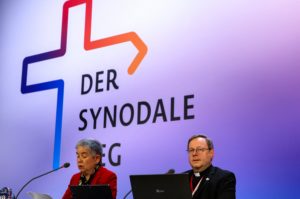The world needs people to build alliances that are not against others, but are in favor of everyone, Pope Francis told faith leaders at the U.N. Climate Change Conference being held in Dubai, United Arab Emirates.
“It is important that religions, without falling into the trap of syncretism, set a good example by working together: not for their own interests or those of one party, but for the interests of our world. Among these, the most important nowadays are peace and the climate,” he said in a video message.
“As religious representatives, let us set an example to show that change is possible and bear witness to respectful and sustainable lifestyles,” he said, speaking in Spanish at the Vatican.
The pope’s message was broadcast Dec. 3 during the inauguration of the first Faith Pavilion at a U.N. climate conference. The pope was to have been present at the COP28 conference Dec. 1-3, but canceled his trip Nov. 28 due to severe bronchitis.
“I offer you cordial greetings, and I am very sorry that I cannot be with you,” he said in the video message.
He thanked the organizers for establishing a religious pavilion as part of a COP “because this testifies to the willingness to work together.”
“At the present time the world needs alliances that are not against someone, but in favor of everyone,” he said.
“With a loud voice, let us implore leaders of nations that our common home be preserved,” he said. “Let us safeguard creation and protect our common home; let us live in peace and promote peace!”
The pope also had a longer speech prepared for the inauguration and that was read in Dubai by Cardinal Pietro Parolin, Vatican secretary of state and president of the Vatican’s delegation at the climate conference.
The pope wrote in his talk, “the problem of climate change is also a religious problem: its roots lie in the creature’s presumption of self-sufficiency.”
“That insatiable desire for power wells up whenever we consider ourselves lords of the world, whenever we live as though God did not exist and, as a result, end up prey to passing things,” he wrote.
“Instead of mastering technology, we let technology master us,” the pope wrote. “We become mere commodities, desensitized, incapable of sorrow and compassion, self-absorbed and, turning our backs on morality and prudence, we destroy the very sources of life.”
Religions are “voices of conscience for humanity,” he wrote, and remind people that “we are finite creatures” with a need for the infinite and the duty to care for creation.
“We need, urgently, to act for the sake of the environment. It is not enough merely to increase spending: we need to change our way of life and thus educate everyone to sober and fraternal lifestyles,” he wrote.
“A world poor in contemplation will be a world polluted in soul, a world that will continue to discard people and produce waste,” he wrote. “A world that lacks prayer will speak many words but, bereft of compassion and tears, will only live off a materialism made of money and weapons.”
Peace and the stewardship of creation are interdependent, the pope wrote, and “peacekeeping is also a task for the religions.”
“May our actions not contradict the words we speak; may we not merely speak about peace but take a stand against those who claim to be believers yet fuel hatred and do not oppose violence,” he added.
The Faith Pavilion was hosted by the Muslim Council of Elders in collaboration with the COP28 presidency, the U.N. Environment Program and more than 50 faith organizations. It was hosting events that bring together representatives from religions, civil society, Indigenous peoples, scientists, young people and political leaders.
The inauguration event Dec. 3 opened with a video message from Egyptian Sheikh Ahmad el-Tayeb, grand imam of Al-Azhar, who greeted Pope Francis and wished him “a speedy and thorough recovery, health and well-being.”
Both Pope Francis and Sheikh el-Tayeb were shown on video signing the Interfaith Statement on Climate Change for COP28 that had been drafted and signed by more than two dozen other religious representatives at a global faith leaders’ summit in Abu Dhabi, United Arab Emirates, Nov. 6-7.
The statement called for “inclusive dialogue, during and beyond COPs, with faith leaders, vulnerable groups, youth, women’s organizations and the scientific community to forge alliances that strengthen sustainable development,” and it “demands transformative action to keep 1.5 degrees Celsius within reach and serve affected and vulnerable communities.”
Despite his being in Rome, the pope said was closely following the work being done at the COP28 in Dubai.
After praying the Angelus from the Vatican Dec. 3, the pope reiterated his appeal “for a response to climate change with concrete political changes” and asked leaders to leave behind “particularism and nationalism, mindsets of the past, and embrace a common vision, all making every effort now, without delay, for a necessary global conversion.”
From his @Pontifiex accounts, the pope was tweeting daily calls for real progress to be made at COP28.
“Time is short. Now more than ever, the future of us all depends on the present that we now choose,” his Dec. 2 tweet said.
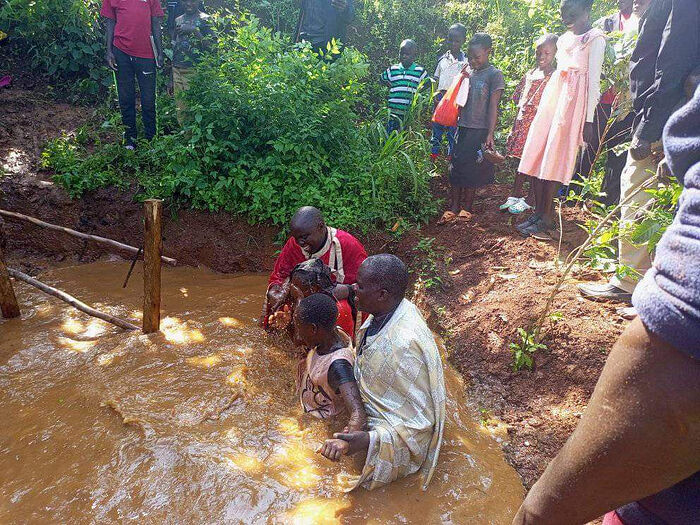
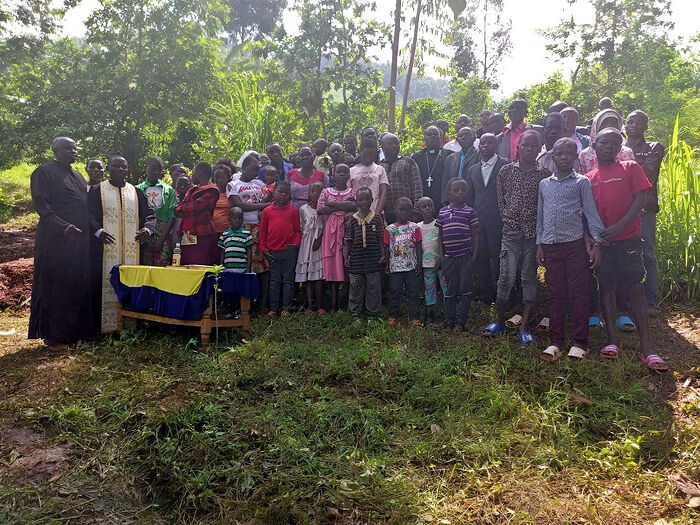
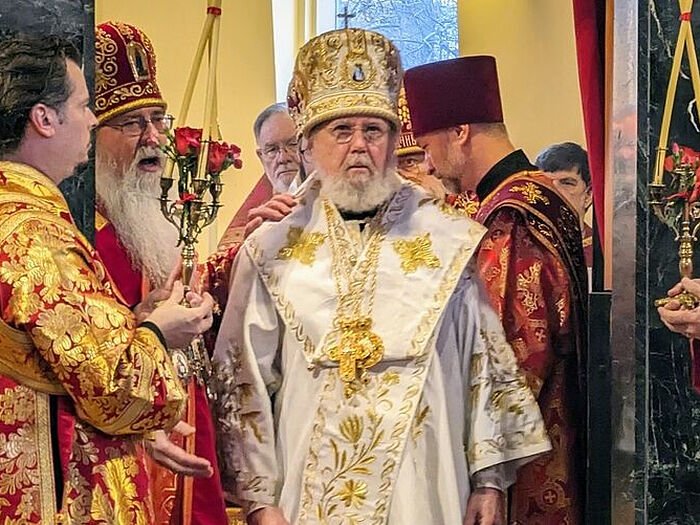
 Archbishop Nikon of Boston (OCA) reposes in the Lord“He exhibited the best traits of a true leader—the ability to listen and the ability to act decisively. We saw him not only as our bishop, but as one of us.”
Archbishop Nikon of Boston (OCA) reposes in the Lord“He exhibited the best traits of a true leader—the ability to listen and the ability to act decisively. We saw him not only as our bishop, but as one of us.” OCA Synod elects next bishop of New England DioceseAt its session at Holy Trinity Cathedral in Chicago yesterday, the Holy Synod of the Orthodox Church in America canonically elected the next bishop for the Diocese of New England.”>November 7 of this year, the OCA Synod formally named Hieromonk Benedict (Churchill) from North Carolina as bishop-elect, and on Saturday, December 2, he was consecrated to the episcopacy.
OCA Synod elects next bishop of New England DioceseAt its session at Holy Trinity Cathedral in Chicago yesterday, the Holy Synod of the Orthodox Church in America canonically elected the next bishop for the Diocese of New England.”>November 7 of this year, the OCA Synod formally named Hieromonk Benedict (Churchill) from North Carolina as bishop-elect, and on Saturday, December 2, he was consecrated to the episcopacy. 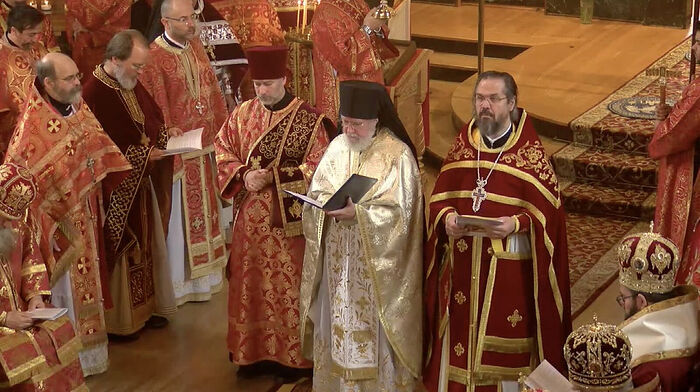
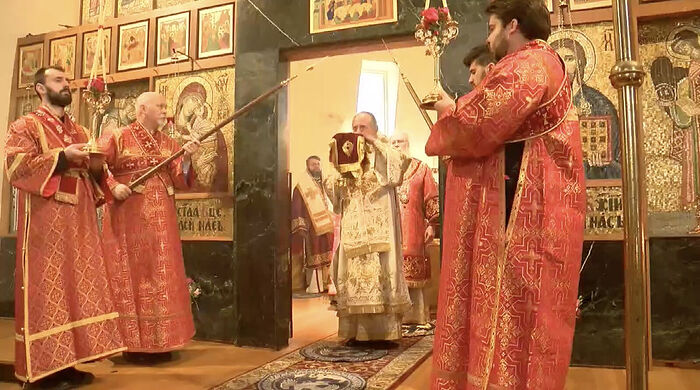

 New Gračanica Monastery (Illinois) hosting high school winter retreatThe Serbian Orthodox Church’s New Gračanica Monastery is hosting a winter retreat for high schools this year on the topic, “Thy Will Be Done: Living Out My Faith in Today’s Society.”
New Gračanica Monastery (Illinois) hosting high school winter retreatThe Serbian Orthodox Church’s New Gračanica Monastery is hosting a winter retreat for high schools this year on the topic, “Thy Will Be Done: Living Out My Faith in Today’s Society.”

 Exhibition on charitable work of Royal Family on display near Moscow’s Sretensky MonasteryThe exhibition, which was prepared by the Sretensky brethren, mainly features and photos and material dedicated to the service of the Empress Alexandra and the Grand Duchesses as sisters of mercy in the infirmaries and hospitals during WWI.
Exhibition on charitable work of Royal Family on display near Moscow’s Sretensky MonasteryThe exhibition, which was prepared by the Sretensky brethren, mainly features and photos and material dedicated to the service of the Empress Alexandra and the Grand Duchesses as sisters of mercy in the infirmaries and hospitals during WWI.